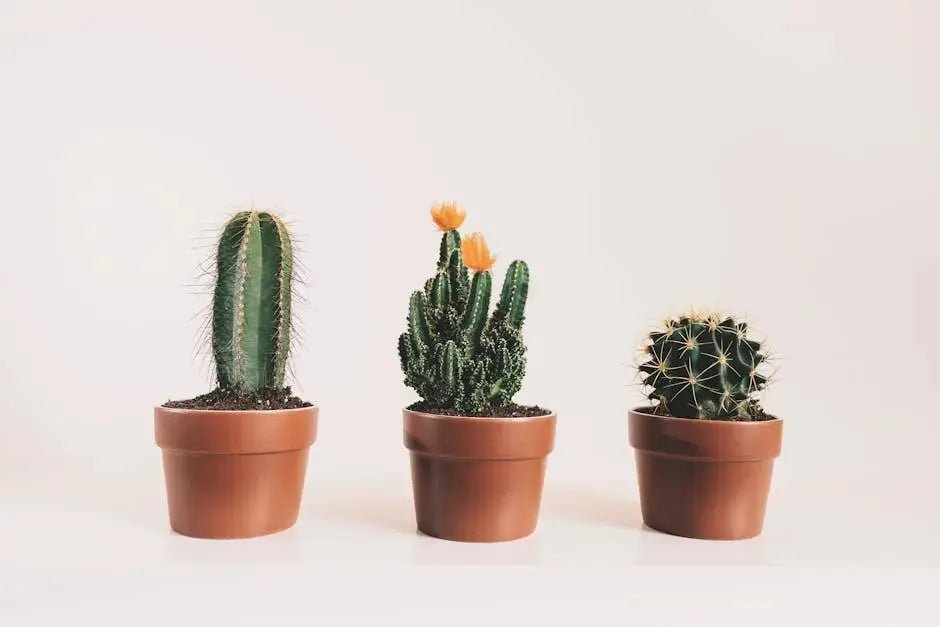
Top Tips for Germinating Cactus Seeds
Germinating cactus seeds might seem like a daunting task, but with the right tips and tricks, it can be an exciting journey. In this blog, we’ll explore simple, easy-to-follow advice to help you get your cactus seeds sprouting in no time. Whether you’re a seasoned gardener or just starting out, these tips are sure to make the process engaging and understandable.
Understanding Cactus Seed Germination
Cactus seeds might look small and unassuming, yet they hide the potential to grow into stunning plants. Successful germination starts with understanding the basics of cactus seed cultivation. Most cacti are slow growers initially, requiring patience and care. A key factor to germination success is mimicking the natural environment of the seeds as closely as possible. This means providing the right amount of warmth, light, and moisture conditions that encourage the seeds to sprout.
Different cactus species require slightly varying conditions to thrive. Take the time to research your specific cactus type to ensure you’re providing the optimal germination environment. Remember, the journey of growing cacti from seed is a rewarding one, filled with lessons and milestones as each seedling starts to take shape.
Selecting the Right Cactus Seeds
Selecting the right seeds is crucial for your cactus gardening success. Opt for fresh seeds from a reliable source to increase germination rates. Freshness is key as older seeds tend to have lower germination rates. Look for seeds from species known for easier germination if you’re a beginner. This early choice can significantly impact the ease and enjoyment of your gardening experience.
Consider starting with species that are naturally adaptive to your local climate. This will not only make the germination process smoother but also ensure that as your cacti grow, they will be well suited to thrive in the conditions you can provide.
Creating the Perfect Germination Environment
Creating a suitable environment for cactus seed germination doesn’t have to be complex. A mini greenhouse can provide the perfect conditions of moisture and warmth needed for seeds to sprout. These can either be purchased or DIY-ed using clear plastic containers. The key is to maintain a consistent environment, one that’s warm but not too hot, with plenty of indirect light.
Moisture is crucial, yet overwatering is a common mistake. Cactus seeds need a moist environment but should never be soggy. Using a spray bottle to gently mist the soil can keep moisture levels optimal without overdoing it.
Step-by-Step Guide to Sowing Cactus Seeds
Sowing cactus seeds is a straightforward process that requires precision and care. Begin with sterilizing your soil mix to ensure it’s free from harmful pathogens. Spread the soil in a shallow tray or pot, moisten it slightly, and scatter your seeds on top. Don’t bury the seeds deeply; a light covering of soil or simply pressing them into the moist surface is enough. Cover the container with a clear lid or plastic wrap to keep humidity in, and place it in a warm, bright spot out of direct sunlight.
Patience is crucial, as some cactus seeds can take anywhere from a few weeks to several months to germinate. Regularly check on your seeds, ensuring the soil is consistently moist. The first sign of life will be tiny green sprouts emerging from the seeds, a truly rewarding sight for any gardener.
Maintaining Moisture and Temperature
Maintaining the right balance of moisture and temperature is pivotal in the cactus seed germination process. The ideal temperature for most cactus seeds is between 70°F and 100°F. Utilizing a heat mat can help maintain this consistent warmth, especially in cooler climates or during winter months.
As your seedlings start to grow, gradually acclimatize them to less humid conditions by opening the lid of your mini greenhouse for a few hours each day. This process helps prevent mold growth and prepares the seedlings for eventual transplantation into individual pots.
Troubleshooting Common Germination Problems
If you find that your seeds aren’t sprouting as expected, don’t be discouraged. Common issues include using old seeds, incorrect temperature, or improper moisture levels. Double-check that you’re providing a consistent warm temperature and that the seeds haven’t dried out or been waterlogged. Adjusting these conditions can often kickstart the germination process. Remember, each cactus species has its own quirks and learning curve.
Mold is another concern that can arise due to excessive humidity. If you notice mold growth, reduce moisture levels and increase air circulation around the seeds. Sometimes, starting over with fresh seeds and sterile soil is the best solution to ensure success.
Transplanting Seedlings: When and How
Transplanting is a delicate stage in your cactus’s life cycle. Seedlings are ready to be moved into individual pots when they’ve developed their first set of true leaves, which will appear after the initial sprout leaves. Carefully lift each seedling with a pair of tweezers or a small tool, ensuring not to damage the fragile roots, and plant them in a cactus-appropriate soil mix. This mix should offer excellent drainage to help your cacti thrive.
Continue to provide plenty of indirect light and water sparingly to avoid root rot. As your cactus grows, so will your confidence and collection, turning your garden into a desert paradise. Enjoy the process of watching these remarkable plants flourish from the seeds you sowed.
Cultivating Patience and Growth
Embarking on the journey of germinating cactus seeds is a rewarding experience that brings you closer to nature and provides the unique satisfaction of watching your cacti grow from tiny seeds. Remember, patience and attention to detail are key in the germination process. By following the tips outlined in this blog, you’re well on your way to successfully growing your own cacti. The joy of gardening awaits, and we’re here to support you every step of the way. Discover more gardening delights.

![[Seeds] - Caribbeangardenseed](http://caribbeangardenseed.com/cdn/shop/files/gift-card-gift-card-1_1024x1024_dfa857db-9150-4315-a362-7f0bb3fb9c47_60x28.png?v=1722895789)
